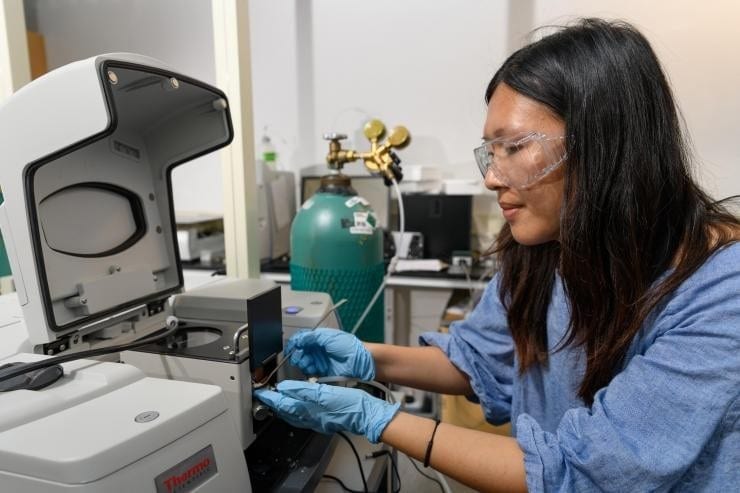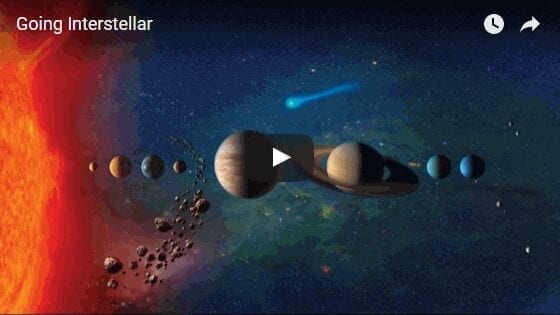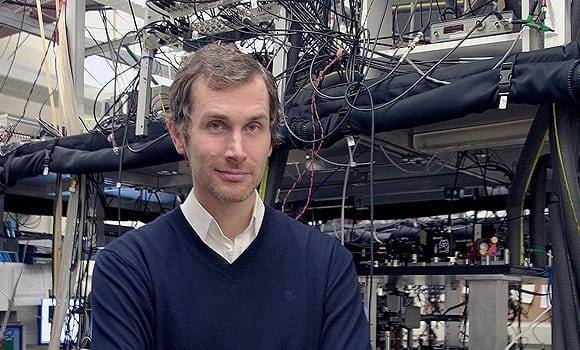
A team of University of Texas at Arlington chemists and engineers have proven that concentrated light, heat and high pressures can drive the one-step conversion of carbon dioxide and water directly into useable liquid hydrocarbon fuels.
This simple and inexpensive new sustainable fuels technology could potentially help limit global warming by removing carbon dioxide from the atmosphere to make fuel. The process also reverts oxygen back into the system as a byproduct of the reaction, with a clear positive environmental impact, researchers said.
“Our process also has an important advantage over battery or gaseous-hydrogen powered vehicle technologies as many of the hydrocarbon products from our reaction are exactly what we use in cars, trucks and planes, so there would be no need to change the current fuel distribution system,“ said Frederick MacDonnell, UTA interim chair of chemistry and biochemistry and co-principal investigator of the project.
In an article published today in the Proceedings of the National Academy of Sciences titled “Solar photothermochemical alkane reverse combustion,” the researchers demonstrate that the one-step conversion of carbon dioxide and water into liquid hydrocarbons and oxygen can be achieved in a photothermochemical flow reactor operating at 180 to 200 C and pressures up to 6 atmospheres.
“We are the first to use both light and heat to synthesize liquid hydrocarbons in a single stage reactor from carbon dioxide and water,” said Brian Dennis, UTA professor of mechanical and aerospace engineering and co-principal investigator of the project. “Concentrated light drives the photochemical reaction, which generates high-energy intermediates and heat to drive thermochemical carbon-chain-forming reactions, thus producing hydrocarbons in a single-step process.”
Duane Dimos, UTA vice president for research commended the researchers on their success.
“Discovering a one-step process to generate renewable hydrocarbon fuels from carbon dioxide and water is a huge achievement,“ Dimos said. “This work strengthens UTA’s reputation as a leading research institution in the area of Global Environmental Impact, as laid out in our Strategic Plan 2020.”
The hybrid photochemical and thermochemical catalyst used for the experiment was based on titanium dioxide, a white powder that cannot absorb the entire visible light spectrum.
“Our next step is to develop a photo-catalyst better matched to the solar spectrum,” MacDonnell said. “Then we could more effectively use the entire spectrum of incident light to work towards the overall goal of a sustainable solar liquid fuel.“
The authors envision using parabolic mirrors to concentrate sunlight on the catalyst bed, providing both heat and photo-excitation for the reaction. Excess heat could even be used to drive related operations for a solar fuels facility, including product separations and water purification.
The Latest on: Sustainable fuels
[google_news title=”” keyword=”Sustainable fuels” num_posts=”10″ blurb_length=”0″ show_thumb=”left”]
via Google News
The Latest on: Sustainable fuels
- Wizz Air Looking to Sustainable Air Fuels to Take Flighton April 27, 2024 at 3:00 pm
“Wizz Air is celebrating its 20th anniversary this year, having grown from a small airline to an international pioneer of sustainable aviation and affordable travel. In addition to fleet renewal and ...
- Cambridge Scientists Discover Simple “Twist” That Supercharges Clean Fuel Generationon April 26, 2024 at 8:55 am
Scientists have discovered a method to super-charge the ‘engine’ of sustainable fuel generation – by giving the materials a little twist. The researchers, led by the University of Cambridge, are devel ...
- Honeywell announces technology for producing low-cost sustainable aviation fuelon April 26, 2024 at 7:51 am
The new technology will expand the feedstock options available in the industry to sources that are more plentiful, says Ken West, president and CEO of the firm ...
- UK ministers firm sustainable fuel plan with 2% 2025 targeton April 25, 2024 at 11:21 am
UK ministers have formally set out plans to mandate the use of sustainable aviation fuels, beginning next year with a requirement for 2% of jet fuel to be sustainably sourced.
- Biden administration to release low-carbon aviation fuel tax credit model on Tuesday - sourceson April 25, 2024 at 6:47 am
The Biden administration is expected to release a climate model for its sustainable aviation fuel (SAF) subsidy program on Tuesday, two sources familiar with the matter said.
- Government targets 10% of jet fuel to come from sustainable sourceson April 25, 2024 at 2:56 am
The Government has outlined fresh plans to ensure that 10% of all fuel used in flights departing from the UK consist of sustainable sources by 2030.
- The Efforts to Get Sustainable Aviation Fuel Off the Groundon April 24, 2024 at 6:25 pm
You’ve been hearing a lot of talk lately about Sustainable Aviation Fuel, but is that talk becoming action? Jordan Godwin, Biofuels Director for the Oil Price Information Service (OPIS), says the conv ...
- A simple 'twist' improves the engine of clean fuel generationon April 24, 2024 at 9:15 am
Researchers have found a way to super-charge the 'engine' of sustainable fuel generation -- by giving the materials a little twist. The researchers are developing low-cost light-harvesting ...
- The fate of sustainable aviation fuel is in the hands of Biden regulatorson April 19, 2024 at 3:40 am
Opinion: The Biden administration should judge that SAF from materials grown in the heartland are a victory for everybody, writes Emily Skor.
- Embracing sustainable aviation fuel will help American farmers thriveon April 17, 2024 at 4:35 pm
As U.S. airlines continue to deliver safe and reliable air transportation to millions of Americans every day, our sector is committed to a greener, more sustainable future.
via Bing News










